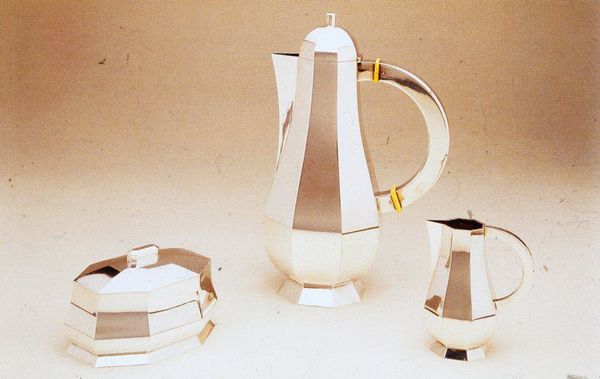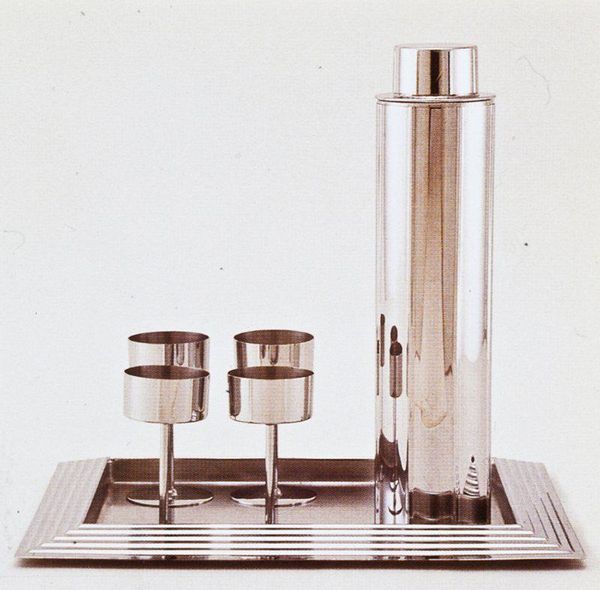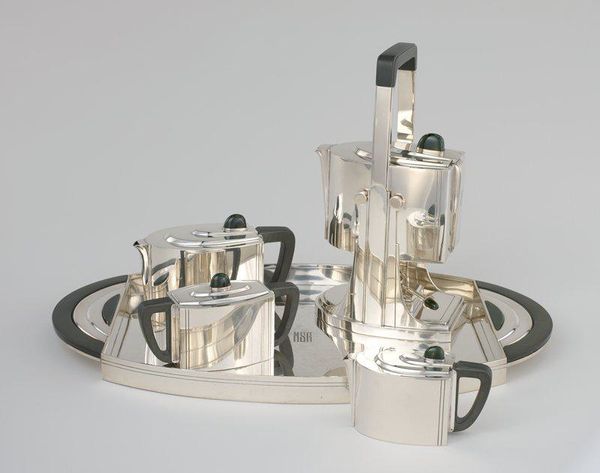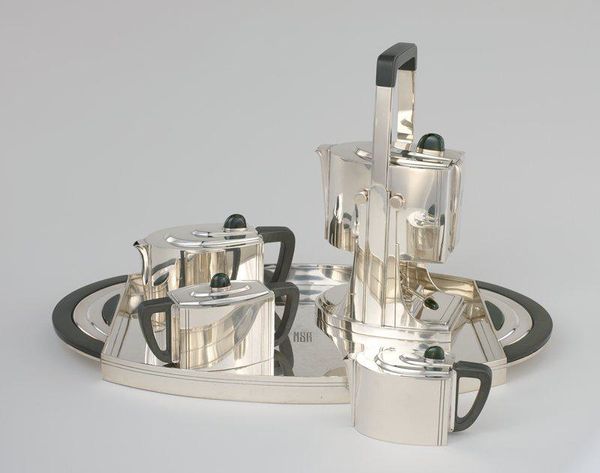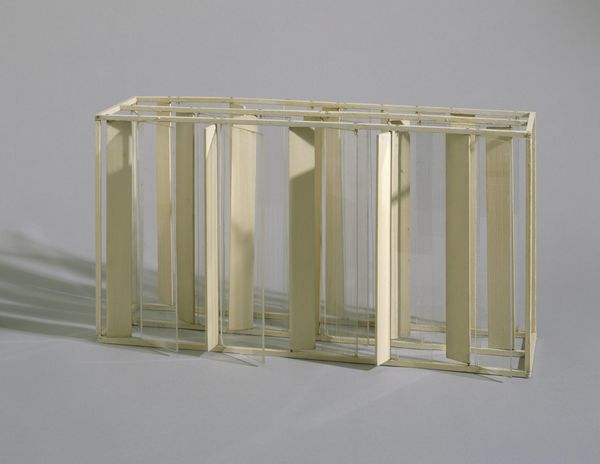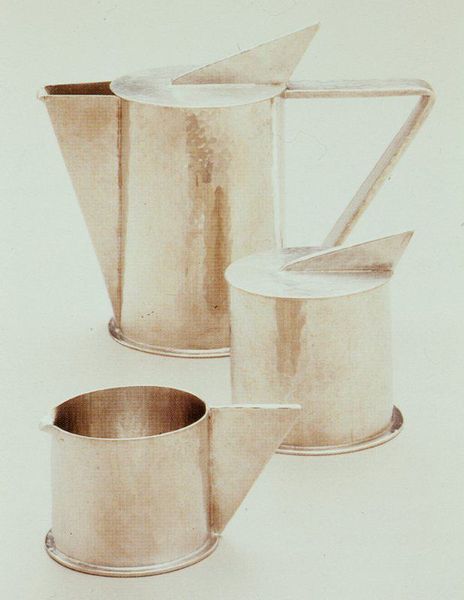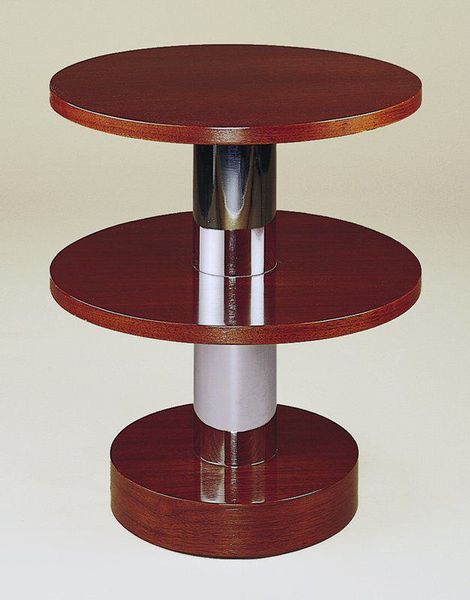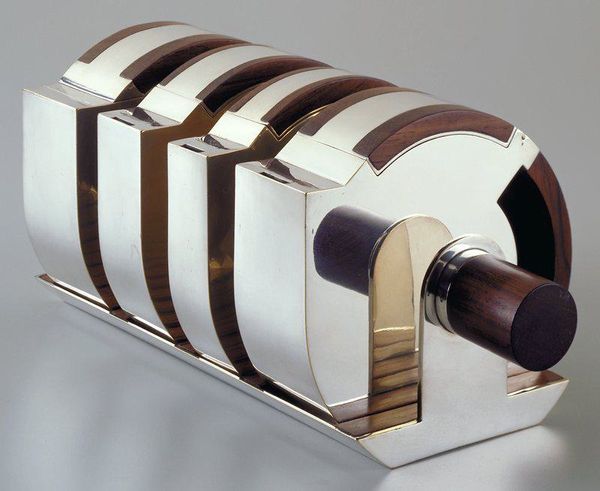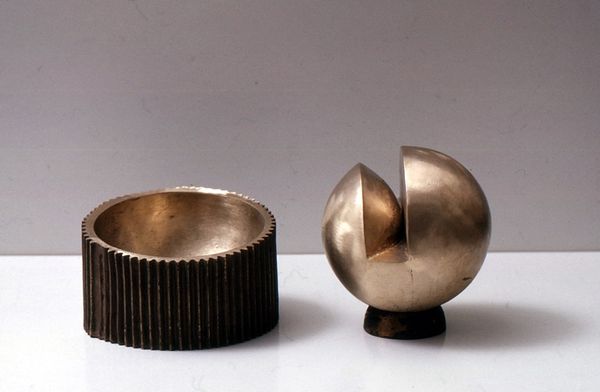
metal, sculpture
#
art-deco
#
metal
#
sculpture
#
sculpture
Dimensions: 5 x 6 1/4 x 4in. (12.7 x 15.9 x 10.2cm)
Copyright: No Known Copyright
This striking teapot was designed by Ilonka Karasz, an artist who worked in the United States. While it has no firm date, the design is associated with the Art Deco movement of the 1920s and 30s. The stepped, geometric form of this piece is typical of the style. But it also reflects the social and cultural shifts of its time. Art Deco design emerged in the wake of the First World War. Its streamlined forms and modern materials rejected the heavy ornamentation and historical references of earlier styles. It aimed for elegance, modernity, and a sense of optimism. The teapot's clean lines and machine-made appearance, which looks like it was manufactured rather than crafted by hand, also reflects the rise of industrial production and the growing importance of consumer culture in the 20th century. To understand this teapot fully, we might research the history of Art Deco, the social context of design in the interwar period, and the career of Ilonka Karasz, all of which would give us a much richer understanding of its historical importance.
Comments
minneapolisinstituteofart almost 2 years ago
⋮
In addition to Art Deco designs in silver, ceramics, textiles, and furniture, Ilonka Karasz contributed illustrations for the cover of New Yorker Magazine for more than thirty years beginning around 1940.
Join the conversation
Join millions of artists and users on Artera today and experience the ultimate creative platform.
